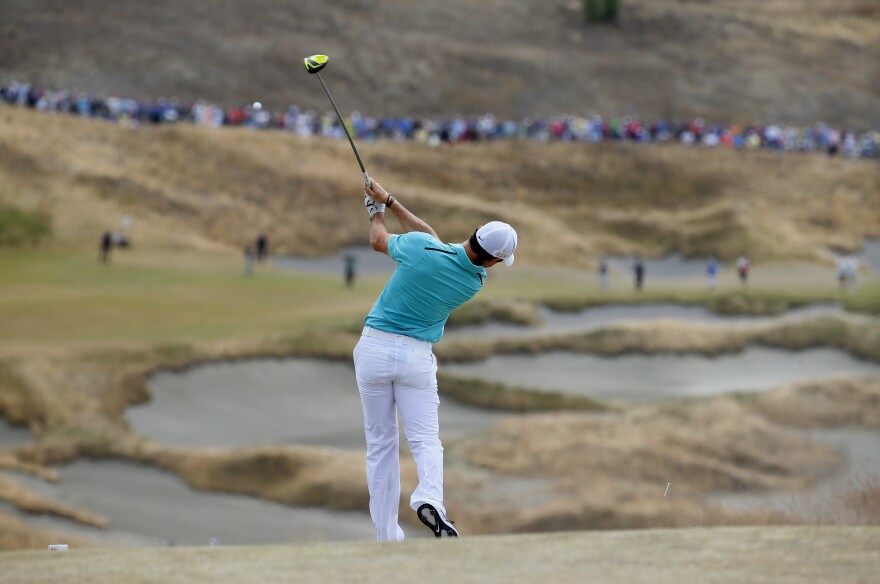The U.S. Open kicked off today, at the Chambers Bay Golf Course in University Place, Washington. One aspect of this year's tournament is standing out already: the grass. It is quite brown in some places, an aesthetic that is almost totally in opposition to say, the lush, verdant greens of the Augusta National Golf Club, where The Masters takes place.
But Chambers Bay is supposed to be different, and it's supposed to be brown. Most of the course is made of what's called fescue grass, which grows slowly, requires less water, and is drought-resistant. As The Seattle Times reports, sometimes fescue isn't always fun to look at:
"One trait of fescue is that it doesn't stay green in hot months. It can turn brown but still be playable. Chambers Bay was brown in 2010 when the U.S. Amateur was played in August. June is a transitional month, so it should be more green than brown. Still, don't expect fans to say, 'I want my lawn to look like that.'"

The Los Angeles Times says using Chambers Bay for the U.S. Open, with its alternative look, is partly strategic:
This "back to the natural" movement began last year for the USGA [United States Golf Association], when it put on the U.S. Open, for both men and women, at a Pinehurst (N.C.) No. 2 course that had been allowed to grow back to its natural loose, free and downright scruffy-looking self.
"We are hoping to change players' perceptions," said Mike Davis, the USGA's executive director..."
He continued later in the piece, "For years, we have gone lush and plush... Players like that. They are used to it."
In other parts of the world, golf fans are used to browner courses. Fescue grass, which plays differently than courses with other grasses, is popular in Europe. Western Washington news outlet King5 reports one golfer, 2014 U.S. Open Champ Martin Kaymer, thinks that could give European players an advantage, and hurt others. "There will have to some slight adjustments here and there," he said.
Copyright 2021 NPR. To see more, visit https://www.npr.org.





